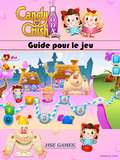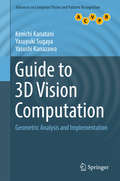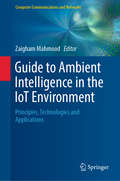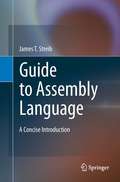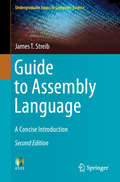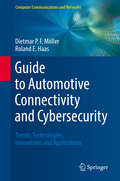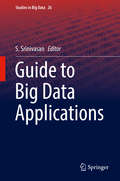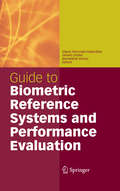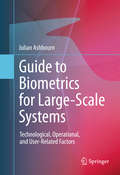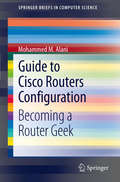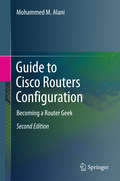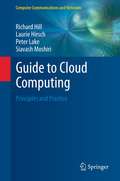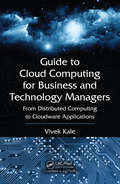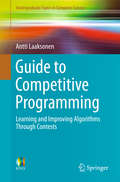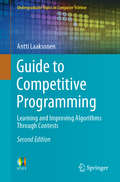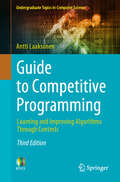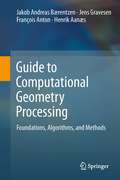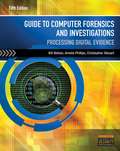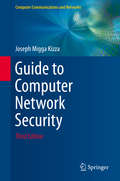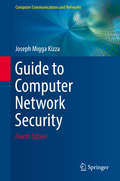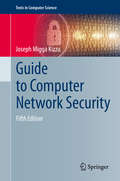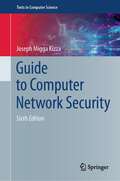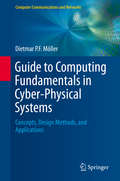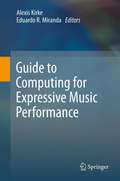- Table View
- List View
Guide pour le jeu Candy Crush Soda Saga
by Joshua Abbott Anne BrunetAvec mon guide, le jeu Candy Crush Soda Saga n'aura plus aucun secret pour vous ! Seuls les joueurs les plus avancés et qui ont les plus hauts scores connaissent les stratégies qui sont expliquées dans ce guide. Mon guide vous propose : - Une vue d'ensemble et les informations de base sur Candy Crush Saga - Des sujets utiles / Les combos et leurs effets - Comment obtenir plus de vies - Les meilleurs combos pour passer les niveaux et obtenir des scores élevés. - Des stratégies pour tous les types de niveaux. Comment réussir n'importe quel niveau ! - Des Secret, trucs et astuces utilisés par les joueurs professionnels ! - Des instructions étapes par étapes détaillées ! - Et beaucoup plus encore Achetez-le maintenant et vous ne serez plus jamais bloqué(e) dans un niveau et vous ne serez plus à court de vies! Rejoignez les meilleurs joueurs avec les meilleurs scores dès maintenant! Clause de non-responsabilité : Ce produit n'est pas associé, affilié, soutenu, ou sponsorisé, et il n'a pas non plus été revu, testé, ou certifié par King ou Midasplayer.com Limited. Ce guide doit être utilisé comme une référence. Il ne modifie ni n'altère en aucune façon le jeu. C'est un guide écrit et non un programme logiciel.
Guide to 3D Vision Computation
by Kenichi Kanatani Yasuyuki Sugaya Yasushi KanazawaThis classroom-tested and easy-to-understand textbook/reference describes the state of the art in 3D reconstruction from multiple images, taking into consideration all aspects of programming and implementation. Unlike other computer vision textbooks, this guide takes a unique approach in which the initial focus is on practical application and the procedures necessary to actually build a computer vision system. The theoretical background is then briefly explained afterwards, highlighting how one can quickly and simply obtain the desired result without knowing the derivation of the mathematical detail. Features: reviews the fundamental algorithms underlying computer vision; describes the latest techniques for 3D reconstruction from multiple images; summarizes the mathematical theory behind statistical error analysis for general geometric estimation problems; presents derivations at the end of each chapter, with solutions supplied at the end of the book; provides additional material at an associated website.
Guide to Ambient Intelligence in the IoT Environment: Principles, Technologies And Applications (Computer Communications and Networks)
by Zaigham MahmoodAmbient intelligence (AmI) is an element of pervasive computing that brings smartness to living and business environments to make them more sensitive, adaptive, autonomous and personalized to human needs. It refers to intelligent interfaces that recognise human presence and preferences, and adjust smart environments to suit their immediate needs and requirements. The key factor is the presence of intelligence and decision-making capabilities in IoT environments. The underlying technologies include pervasive computing, ubiquitous communication, seamless connectivity of smart devices, sensor networks, artificial intelligence (AI), machine learning (ML) and context-aware human-computer interaction (HCI). AmI applications and scenarios include smart homes, autonomous self-driving vehicles, healthcare systems, smart roads, the industry sector, smart facilities management, the education sector, emergency services, and many more. The advantages of AmI in the IoT environment are extensive. However, as for any new technological paradigm, there are also many open issues and limitations. This book discusses the AmI element of the IoT and the relevant principles, frameworks, and technologies in particular, as well as the benefits and inherent limitations. It reviews the state of the art of current developments relating to smart spaces and AmI-based IoT environments. Written by leading international researchers and practitioners, the majority of the contributions focus on device connectivity, pervasive computing and context modelling (including communication, security, interoperability, scalability, and adaptability). The book presents cutting-edge research, current trends, and case studies, as well as suggestions to further our understanding and the development and enhancement of the AmI-IoT vision.
Guide to Assembly Language
by James T. StreibThis book will enable the reader to very quickly begin programming in assembly language. Through this hands-on programming, readers will also learn more about the computer architecture of the Intel 32-bit processor, as well as the relationship between high-level and low-level languages. Topics: presents an overview of assembly language, and an introduction to general purpose registers; illustrates the key concepts of each chapter with complete programs, chapter summaries, and exercises; covers input/output, basic arithmetic instructions, selection structures, and iteration structures; introduces logic, shift, arithmetic shift, rotate, and stack instructions; discusses procedures and macros, and examines arrays and strings; investigates machine language from a discovery perspective. This textbook is an ideal introduction to programming in assembly language for undergraduate students, and a concise guide for professionals wishing to learn how to write logically correct programs in a minimal amount of time.
Guide to Assembly Language: A Concise Introduction (Undergraduate Topics in Computer Science)
by James T. StreibThis concise guide is designed to enable the reader to learn how to program in assembly language as quickly as possible. Through a hands-on programming approach, readers will also learn about the architecture of the Intel processor, and the relationship between high-level and low-level languages.This updated second edition has been expanded with additional exercises, and enhanced with new material on floating-point numbers and 64-bit processing.Topics and features: provides guidance on simplified register usage, simplified input/output using C-like statements, and the use of high-level control structures; describes the implementation of control structures, without the use of high-level structures, and often with related C program code; illustrates concepts with one or more complete program; presents review summaries in each chapter, together with a variety of exercises, from short-answer questions to programming assignments; covers selection and iteration structures, logic, shift, arithmetic shift, rotate, and stack instructions, procedures and macros, arrays, and strings; includes an introduction to floating-point instructions and 64-bit processing; examines machine language from a discovery perspective, introducing the principles of computer organization.A must-have resource for undergraduate students seeking to learn the fundamentals necessary to begin writing logically correct programs in a minimal amount of time, this work will serve as an ideal textbook for an assembly language course, or as a supplementary text for courses on computer organization and architecture. The presentation assumes prior knowledge of the basics of programming in a high-level language such as C, C++, or Java.
Guide to Automotive Connectivity and Cybersecurity: Trends, Technologies, Innovations and Applications (Computer Communications and Networks)
by Dietmar P.F. Möller Roland E. HaasThis comprehensive text/reference presents an in-depth review of the state of the art of automotive connectivity and cybersecurity with regard to trends, technologies, innovations, and applications. The text describes the challenges of the global automotive market, clearly showing where the multitude of innovative activities fit within the overall effort of cutting-edge automotive innovations, and provides an ideal framework for understanding the complexity of automotive connectivity and cybersecurity.Topics and features: discusses the automotive market, automotive research and development, and automotive electrical/electronic and software technology; examines connected cars and autonomous vehicles, and methodological approaches to cybersecurity to avoid cyber-attacks against vehicles; provides an overview on the automotive industry that introduces the trends driving the automotive industry towards smart mobility and autonomous driving; reviews automotive research and development, offering background on the complexity involved in developing new vehicle models; describes the technologies essential for the evolution of connected cars, such as cyber-physical systems and the Internet of Things; presents case studies on Car2Go and car sharing, car hailing and ridesharing, connected parking, and advanced driver assistance systems; includes review questions and exercises at the end of each chapter.The insights offered by this practical guide will be of great value to graduate students, academic researchers and professionals in industry seeking to learn about the advanced methodologies in automotive connectivity and cybersecurity.
Guide to Big Data Applications
by S. SrinivasanThis handbook brings together a variety of approaches to the uses of big data in multiple fields, primarily science, medicine, and business. This single resource features contributions from researchers around the world from a variety of fields, where they share their findings and experience. This book is intended to help spur further innovation in big data. The research is presented in a way that allows readers, regardless of their field of study, to learn from how applications have proven successful and how similar applications could be used in their own field. Contributions stem from researchers in fields such as physics, biology, energy, healthcare, and business. The contributors also discuss important topics such as fraud detection, privacy implications, legal perspectives, and ethical handling of big data.
Guide to Biometric Reference Systems and Performance Evaluation
by Anil K. Jain Gérard Chollet Dijana Petrovska-Delacrétaz Bernadette DorizziThis book introduces a new performance evaluation framework designed to give complete coverage of performance evaluation of major biometric systems. Two key issues are presented: The first is to give a unique snapshot of the performance evaluation of various biometrics within a common evaluation framework. The second is the presence of benchmarking evaluation framework, to be used in future performance evaluations. Features: - provides a global perspective with a common evaluation scheme and methodology; - offers readers a tool for a better evaluation of their algorithms by giving them the instruments to fully reproduce the benchmarking (reference) experiments (software, database, experimental protocols); - examines current research results with this framework. This unique text combines state-of-the-art research with practical tools for researchers and graduates in the field of biometrics.
Guide to Biometrics for Large-Scale Systems
by Julian AshbournThis book considers biometric technology in a broad light, integrating the concept seamlessly into mainstream IT, while discussing the cultural attitudes and the societal impact of identity management. Features: summarizes the material covered at the beginning of every chapter, and provides chapter-ending review questions and discussion points; reviews identity verification in nature, and early historical interest in anatomical measurement; provides an overview of biometric technology, presents a focus on biometric systems and true systems integration, examines the concept of identity management, and predicts future trends; investigates performance issues in biometric systems, the management and security of biometric data, and the impact of mobile devices on biometrics technology; explains the equivalence of performance across operational nodes, introducing the APEX system; considers the legal, political and societal factors of biometric technology, in addition to user psychology and other human factors.
Guide to Cisco Routers Configuration
by Mohammed AlaniThis work provides a guide to the configuration of Cisco routers, from tasks for beginners to advanced operations. A collection of detailed "how-to" instructions are presented, which will be of use to all professionals and students who engage with Cisco routers in the field or in the lab. The guide starts with the simple step-by-step task of connecting the router and performing basic configuration, before building up to complex and sensitive operations such as router IOS upgrade and Site-to-Site VPNs.
Guide to Cisco Routers Configuration
by Mohammed M. AlaniThis work provides a guide to the configuration of Cisco routers, from tasks for beginners to advanced operations. A collection of detailed "how-to" instructions are presented, which will be of use to all professionals and students who engage with Cisco routers in the field or in the lab. The guide starts with the simple step-by-step task of connecting the router and performing basic configuration, before building up to complex and sensitive operations such as router IOS upgrade and Site-to-Site VPNs.
Guide to Cloud Computing
by Richard Hill Laurie Hirsch Siavash Moshiri Peter LakeThis book describes the landscape of cloud computing from first principles, leading the reader step-by-step through the process of building and configuring a cloud environment. The book not only considers the technologies for designing and creating cloud computing platforms, but also the business models and frameworks in real-world implementation of cloud platforms. Emphasis is placed on "learning by doing," and readers are encouraged to experiment with a range of different tools and approaches. Topics and features: includes review questions, hands-on exercises, study activities and discussion topics throughout the text; demonstrates the approaches used to build cloud computing infrastructures; reviews the social, economic, and political aspects of the on-going growth in cloud computing use; discusses legal and security concerns in cloud computing; examines techniques for the appraisal of financial investment into cloud computing; identifies areas for further research within this rapidly-moving field.
Guide to Cloud Computing for Business and Technology Managers: From Distributed Computing to Cloudware Applications
by Vivek KaleGuide to Cloud Computing for Business and Technology Managers: From Distributed Computing to Cloudware Applications unravels the mystery of cloud computing and explains how it can transform the operating contexts of business enterprises. It provides a clear understanding of what cloud computing really means, what it can do, and when it is practical
Guide to Competitive Programming
by Antti LaaksonenThis invaluable textbook presents a comprehensive introduction to modern competitive programming. The text highlights how competitive programming has proven to be an excellent way to learn algorithms, by encouraging the design of algorithms that actually work, stimulating the improvement of programming and debugging skills, and reinforcing the type of thinking required to solve problems in a competitive setting. The book contains many "folklore" algorithm design tricks that are known by experienced competitive programmers, yet which have previously only been formally discussed in online forums and blog posts. Topics and features: reviews the features of the C++ programming language, and describes how to create efficient algorithms that can quickly process large data sets; discusses sorting algorithms and binary search, and examines a selection of data structures of the C++ standard library; introduces the algorithm design technique of dynamic programming, and investigates elementary graph algorithms; covers such advanced algorithm design topics as bit-parallelism and amortized analysis, and presents a focus on efficiently processing array range queries; surveys specialized algorithms for trees, and discusses the mathematical topics that are relevant in competitive programming; examines advanced graph techniques, geometric algorithms, and string techniques; describes a selection of more advanced topics, including square root algorithms and dynamic programming optimization. This easy-to-follow guide is an ideal reference for all students wishing to learn algorithms, and practice for programming contests. Knowledge of the basics of programming is assumed, but previous background in algorithm design or programming contests is not necessary. Due to the broad range of topics covered at various levels of difficulty, this book is suitable for both beginners and more experienced readers. <P><P><i>Advisory: Bookshare has learned that this book offers only partial accessibility. We have kept it in the collection because it is useful for some of our members. To explore further access options with us, please contact us through the Book Quality link on the right sidebar. Benetech is actively working on projects to improve accessibility issues such as these.</i>
Guide to Competitive Programming: Learning and Improving Algorithms Through Contests (Undergraduate Topics in Computer Science)
by Antti LaaksonenBuilding on what already is the most comprehensive introduction to competitive programming, this enhanced new textbook features new material on advanced topics, such as calculating Fourier transforms, finding minimum cost flows in graphs, and using automata in string problems. Critically, the text accessibly describes and shows how competitive programming is a proven method of implementing and testing algorithms, as well as developing computational thinking and improving both programming and debugging skills.Topics and features: introduces dynamic programming and other fundamental algorithm design techniques, and investigates a wide selection of graph algorithms; compatible with the IOI Syllabus, yet also covering more advanced topics, such as maximum flows, Nim theory, and suffix structures; surveys specialized algorithms for trees, and discusses the mathematical topics that are relevant in competitive programming; reviews the features of the C++ programming language, and describes how to create efficient algorithms that can quickly process large data sets; discusses sorting algorithms and binary search, and examines a selection of data structures of the C++ standard library; covers such advanced algorithm design topics as bit-parallelism and amortized analysis, and presents a focus on efficiently processing array range queries; describes a selection of more advanced topics, including square-root algorithms and dynamic programming optimization.Fully updated, expanded and easy to follow, this core textbook/guide is an ideal reference for all students needing to learn algorithms and to practice for programming contests. Knowledge of programming basics is assumed, but previous background in algorithm design or programming contests is not necessary. With its breadth of topics, examples and references, the book is eminently suitable for both beginners and more experienced readers alike.
Guide to Competitive Programming: Learning and Improving Algorithms Through Contests (Undergraduate Topics in Computer Science)
by Antti LaaksonenThis textbook features new material on advanced topics, such as calculating Fourier transforms, finding minimum cost flows in graphs, and using automata in string problems. Critically, the text accessibly describes and shows how competitive programming is a proven method of implementing and testing algorithms, as well as developing computational thinking and improving both programming and debugging skills. Topics and features: Introduces dynamic programming and other fundamental algorithm design techniques, and investigates a wide selection of graph algorithms Compatible with the IOI Syllabus, yet also covering more advanced topics, such as maximum flows, Nim theory, and suffix structures Provides advice for students aiming for the IOI contest Surveys specialized algorithms for trees, and discusses the mathematical topics that are relevant in competitive programming Examines the use of the Python language in competitive programming Discusses sorting algorithms and binary search, and examines a selection of data structures of the C++ standard library Explores how GenAI will impact on the future of the field Covers such advanced algorithm design topics as bit-parallelism and amortized analysis, and presents a focus on efficiently processing array range queries Describes a selection of more advanced topics, including square-root algorithms and dynamic programming optimization Fully updated, expanded and easy to follow, this core textbook/guide is an ideal reference for all students needing to learn algorithms and to practice for programming contests. Knowledge of programming basics is assumed, but previous background in algorithm design or programming contests is not necessary. With its breadth of topics, examples and references, the book is eminently suitable for both beginners and more experienced readers alike.
Guide to Computational Geometry Processing
by Jens Gravesen J. Andreas Bærentzen François Anton Henrik AanæsThis book reviews the algorithms for processing geometric data, with a practical focus on important techniques not covered by traditional courses on computer vision and computer graphics. Features: presents an overview of the underlying mathematical theory, covering vector spaces, metric space, affine spaces, differential geometry, and finite difference methods for derivatives and differential equations; reviews geometry representations, including polygonal meshes, splines, and subdivision surfaces; examines techniques for computing curvature from polygonal meshes; describes algorithms for mesh smoothing, mesh parametrization, and mesh optimization and simplification; discusses point location databases and convex hulls of point sets; investigates the reconstruction of triangle meshes from point clouds, including methods for registration of point clouds and surface reconstruction; provides additional material at a supplementary website; includes self-study exercises throughout the text.
Guide to Computer Forensics and Investigations: Processing Digital Evidence
by Amelia Phillips Bill Nelson Christopher SteuartUpdated with the latest advances from the field, GUIDE TO COMPUTER FORENSICS AND INVESTIGATIONS, Fifth Edition combines all-encompassing topic coverage, authoritative information from seasoned experts, and real-world applications to deliver the most comprehensive forensics resource available. This proven author team's wide ranging areas of expertise mirror the breadth of coverage provided in the book, which focuses on techniques and practices for gathering and analyzing evidence used to solve crimes involving computers. While other books offer more of an overview of the field, this hands-on learning text provides clear instruction on the tools and techniques of the trade, introducing readers to every step of the computer forensics investigation-from lab set-up to testifying in court. It also details step-by-step guidance on how to use current forensics software and provides free demo downloads. Appropriate for learners new to the field, it is also an excellent refresher and technology update for professionals in law enforcement, investigations, or computer security.
Guide to Computer Network Security
by Joseph Migga KizzaThis comprehensive guide exposes the security risks and vulnerabilities of computer networks and networked devices, offering advice on developing improved algorithms and best practices for enhancing system security. Fully revised and updated, this new edition embraces a broader view of computer networks that encompasses agile mobile systems and social networks. Features: provides supporting material for lecturers and students, including an instructor's manual, slides, solutions, and laboratory materials; includes both quick and more thought-provoking exercises at the end of each chapter; devotes an entire chapter to laboratory exercises; discusses flaws and vulnerabilities in computer network infrastructures and protocols; proposes practical and efficient solutions to security issues; explores the role of legislation, regulation, and law enforcement in maintaining computer and computer network security; examines the impact of developments in virtualization, cloud computing, and mobile systems.
Guide to Computer Network Security
by Joseph Migga KizzaWith the growth of cloud computing, social networks, and ever more advanced mobile devices, information security and assurance has become more important than ever before. This comprehensive and authoritative "Guide to Computer Network Security" exposes the various security risks and vulnerabilities of computer networks and networked devices, offering advice on developing improved algorithms and best practices for enhancing system security. Fully revised and updated, this much-anticipated new edition embraces a broader view of computer networks that encompasses new agile mobile systems and social networks. The book broadly surveys thought-provoking security issues, discussing and raising questions about the impact of new technologies and protocols. Topics and features: provides supporting material for lecturers and students at an associated website, including syllabus suggestions, an instructor s manual, slides, solutions, and laboratory materials; includes both quickly-workable questions and more thought-provoking advanced exercises at the end of each chapter; devotes an entire chapter to laboratory exercises, offering both weekly and semester-long assignments, and hard open research projects; surveys known security threats, and discusses flaws and vulnerabilities in computer network infrastructures and protocols; reviews existing best practices, proposes practical and efficient solutions to security issues, and encourages readers to investigate alternative possible approaches; explores the role of legislation, regulation, and law enforcement in maintaining computer and computer network security; examines the impact of developments in virtualization, cloud computing, and mobile systems, which have extended the boundaries of the traditional computer network. This unique text/reference is an essential instructional and research tool for undergraduates in computer science and engineering. It is also a valuable reference for practitioners involved in computer networks, data security, and information-intensive areas. "
Guide to Computer Network Security (Computer Communications and Networks)
by Joseph Migga KizzaThis fully updated new edition explores the security issues, vulnerabilities and dangers encountered by the users of modern computing and communication devices, highlighting the need to develop improved algorithms, protocols, and best practices to enhance the security of public, private and enterprise systems alike. Features: introduces the fundamentals of traditional computer networks and the security threats they face; discusses the security challenges introduced by virtualization software, cloud computing and mobile systems; examines the security quagmire presented by the home computing environment; raises important legislative, legal, social, technical and ethical security issues, including the tension between the needs of individual privacy and collective security; provides both quickly workable and more thought-provoking exercises at the end of each chapter, with one chapter devoted entirely to lab exercises; supplies additional support material for instructors at an associated website.
Guide to Computer Network Security (Texts in Computer Science)
by Joseph Migga KizzaThis timely textbook presents a comprehensive guide to the core topics in cybersecurity, covering issues of security that extend beyond traditional computer networks to the ubiquitous mobile communications and online social networks that have become part of our daily lives. In the context of our growing dependence on an ever-changing digital ecosystem, this book stresses the importance of security awareness, whether in our homes, our businesses, or our public spaces.This fully updated new edition features new material on the security issues raised by blockchain technology, and its use in logistics, digital ledgers, payments systems, and digital contracts.Topics and features:Explores the full range of security risks and vulnerabilities in all connected digital systemsInspires debate over future developments and improvements necessary to enhance the security of personal, public, and private enterprise systemsRaises thought-provoking questions regarding legislative, legal, social, technical, and ethical challenges, such as the tension between privacy and securityDescribes the fundamentals of traditional computer network security, and common threats to securityReviews the current landscape of tools, algorithms, and professional best practices in use to maintain security of digital systemsDiscusses the security issues introduced by the latest generation of network technologies, including mobile systems, cloud computing, and blockchainPresents exercises of varying levels of difficulty at the end of each chapter, and concludes with a diverse selection of practical projectsOffers supplementary material for students and instructors at an associated website, including slides, additional projects, and syllabus suggestionsThis important textbook/reference is an invaluable resource for students of computer science, engineering, and information management, as well as for practitioners working in data- and information-intensive industries.
Guide to Computer Network Security (Texts in Computer Science)
by Joseph Migga KizzaThis timely textbook presents a comprehensive guide to the core topics in computing and information security and assurance realms, going beyond the security of networks to the ubiquitous mobile communications and online social networks that have become part of daily life.In the context of growing human dependence on a digital ecosystem, this book stresses the importance of security awareness—whether in homes, businesses, or public spaces. It also embraces the new and more agile and artificial-intelligence-boosted computing systems models, online social networks, and virtual platforms that are interweaving and fueling growth of an ecosystem of intelligent digital and associated social networks. This fully updated edition features new material on new and developing artificial intelligence models across all computing security systems spheres, blockchain technology, and the metaverse, leading toward security systems virtualizations.Topics and features:Explores the range of risks and vulnerabilities in all connected digital systemsPresents exercises of varying levels of difficulty at the end of each chapter, and concludes with a diverse selection of practical projectsDescribes the fundamentals of traditional computer network security, and common threats to securityDiscusses the role and challenges of artificial intelligence in advancing the security of computing systems’ algorithms, protocols, and best practicesRaises thought-provoking questions regarding legislative, legal, social, technical, and ethical challenges, such as the tension between privacy and securityOffers supplementary material for students and instructors at an associated website, including slides, additional projects, and syllabus suggestionsThis important textbook/reference is an invaluable resource for students of computer science, engineering, and information management, as well as for practitioners working in data- and information-intensive industries.Professor Joseph Migga Kizza is a professor, former Head of the Department of Computer Science and Engineering, and a former Director of the UTC InfoSec Center, at the University of Tennessee at Chattanooga, USA. He also authored the successful Springer textbooks Ethical and Social Issues in the Information Age and Ethical and Secure Computing: A Concise Module.
Guide to Computing Fundamentals in Cyber-Physical Systems
by Dietmar P. F. MöllerThis book presents an in-depth review of the state of the art ofcyber-physical systems (CPS) and their applications. Relevant case studies arealso provided, to help the reader to master the interdisciplinary material. Features: includes self-testexercises in each chapter, together with a glossary; offers a variety of teachingsupport materials at an associated website, including a comprehensive set ofslides and lecture videos; presents a brief overview of the study of systems,and embedded computing systems, before defining CPS; introduces the concepts ofthe Internet of Things, and ubiquitous (or pervasive) computing; reviews thedesign challenges of CPS, and their impact on systems and software engineering;describes the ideas behind Industry 4. 0 and the revolutions in digitalmanufacturing, including smart and agile manufacturing, as well ascybersecurity in manufacturing; considers the social impact of the changes inskills required by the globalized, digital work environment of the future.
Guide to Computing for Expressive Music Performance
by Eduardo R. Miranda Alexis KirkeThis book discusses all aspects of computing for expressive performance, from the history of CSEMPs to the very latest research, in addition to discussing the fundamental ideas, and key issues and directions for future research. Topics and features: includes review questions at the end of each chapter; presents a survey of systems for real-time interactive control of automatic expressive music performance, including simulated conducting systems; examines two systems in detail, YQX and IMAP, each providing an example of a very different approach; introduces techniques for synthesizing expressive non-piano performances; addresses the challenges found in polyphonic music expression, from a statistical modelling point of view; discusses the automated analysis of musical structure, and the evaluation of CSEMPs; describes the emerging field of embodied expressive musical performance, devoted to building robots that can expressively perform music with traditional instruments.
